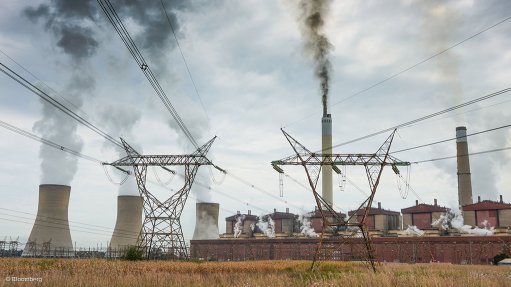Thermal coal prices stagnate amid oversupply, weak demand
Market research firm BMI, a Fitch Solutions company, says thermal coal prices will remain stagnant owing to oversupply and weak demand.
The company maintains its Newcastle thermal coal price forecast for this year at an average of $135/t. Prices, which averaged $174/t in 2023, were around $135/t on July 20 and have averaged at $132/t in the year-to-date.
"While our forecast implies that we expect prices to remain supported over the coming months, it paints a significant departure from the yearly average of $358/t reached in 2022.
“Since the second half of 2023, buoyant coal supply and demand weakness have resulted in increases in coal inventories globally and sharp declines in prices since their 2022 highs," BMI says.
Production in key coal-consuming markets such as India and China has risen significantly.
"We forecast global thermal coal consumption to decline by 0.2% year-on-year in 2024, after displaying stagnant growth in 2023. On the other hand, we expect global thermal coal production to grow by 3% year-on-year in 2024, similar to 3.1% year-on-year in 2023. Together, these figures will lead to a wider global surplus of thermal coal in 2024,” BMI says.
Major importers such as China and India are pushing towards greater domestic production, ensuring weak import demand for this year.
In China, coal demand strengthened in 2023 but is showing signs of slowing down this year. Data from China’s customs authorities shows that total coal imports grew by 22.3% year-on-year from January to May, compared with a 101.7% year-on-year increase overall in 2023, reaching 311-million tonnes.
This rise in imports has not benefited Newcastle thermal coal prices, which ranged between $130/t and 160/t in the second half of 2023 and $115/t to $145/t so far this year. Severe droughts in 2023 drove China's increased coal imports, but BMI expects a La Nina weather event could reduce coal power demand owing to heavier rains.
Over the long term, China remains committed to coal, having emphasised its importance during the National Congress in 2022 and the Two Sessions meeting in March 2023. Developments in China will significantly impact on global coal demand, as China's power sector alone accounts for one-third of global coal consumption according to the International Energy Agency.
"Looking closer at demand, we expect Europe to drive global coal demand weakness in the coming months. Throughout 2022 and 2023, European markets have actively sought to diversify away from Russian energy resources following the start of the Russia-Ukraine conflict. While this led to a short-term rise in coal demand, the region managed to significantly increase its gas storage levels,” the research firm notes.
Mild winters at the end of 2022 and 2023, along with increased gas supplies, have capped European coal demand and prices since January 2023, driving the global price collapse. As of early July, EU gas storage levels are robust and are expected to reach the 90% fill target by the heating season.
Rising coal stockpiles and lower demand in Europe have led some market participants to resell excess inventory to Asia and Africa, putting further pressure on global prices.
In 2023, European thermal coal had been shipped to markets such as Morocco, Senegal and Guatemala.
On the supply side, Australia's thermal coal production is set to rise by 1% year-on-year this year, following a 2.5% year-on-year growth in 2023. BMI forecasts Australia to produce 303-million tonnes of thermal coal this year and states that output is likely to remain steady up to 2033.
However, China and India continue to lead global coal production and growth by supporting increases in coal plant permits and directing State-owned miners to boost output.
“In Mainland China, production reached 1.56-billion tonnes from March to June, leading to a substantial increase in coal inventories in the absence of strong demand.
“Given such buoyant supply conditions, domestic production is expected to be adjusted to avoid oversupply. If necessary, production capacity can be increased as the government approved 260-million tonnes of new coal mining capacity since 2022 and reopened previously closed mines,” BMI note.
In India, the Ministry of Coal reported a 14.5% increase in domestic coal production in June as the government boosts efforts to be self-reliant in energy. June coal production reached 84.6-million tonnes, up from last year’s 73.9-million tonnes.
Over the long term, BMI expects thermal coal prices to average $130/t in 2025, then fall to $65/t in 2033, with an average of $98.50/t from 2024 to 2033. The EU's shift towards alternative power will weaken coal’s dominance. According to the EU’s REPowerEU plan, announced in May 2022, the region aims to increase its renewable-energy target from 40% to 45% by 2030.
Globally, BMI foresees reduced coal use owing to the expansion of renewable energy in the EU and China’s climate goals. However, production is expected to increase in China and India, reducing their reliance on imports. Outside of these countries, no strong growth signs are observed.
“Firms are likely to increasingly divest away from their coal resources in the longer term as energy trends shift away from coal, alongside increasing climate concerns. Governments, banks, and mining companies continue to show a lack of appetite for coal, particularly thermal coal,” the firm notes.
Asia is expected to drive the remaining coal use expansion towards 2033. Many coal-fired power plants are in the project pipeline, supporting growth in the near to medium term. Mainland China and India have not committed to stopping new projects domestically, and financing remains available, with 96 operational, expansionary, and new mines currently tracked in Asia.
“We believe the projects already undergoing construction or having reached financial closure will likely continue to progress, while those in the early stages will face significant risks of derailing. This is in line with our long-held view that the current batch of coal projects will be among the last wave,” BMI says.
Asia will remain dependent on coal for power generation in the coming decade owing to energy security concerns and the number of young coal power plants coming online.
“Coal also still remains the most practical means to stimulate affordable electricity generation growth at the pace and scale needed to support continued economic growth in the region for many emerging markets,” BMI says.
Several large coal consumers in the region, including China, India and Australia, avoided or opposed announcing an end date for coal at COP26. The agreement to reduce coal-fired power's role was softened from a 'phase out' to a 'phase down', allowing the sector to continue operating.
In absolute terms, coal power will continue to grow before peaking towards the end of this decade and then declining. This will support continued coal mining and trade in the region, with India, China, and Indonesia remaining key players.
The main risks to prices include a global recession, a significant slowdown in China’s economy, or the US dollar strengthening to 2022 highs. A recession would impact on industrial production and power demand, exacerbating the current decline in coal prices. A slowdown in China’s growth would result in larger coal surpluses.
Comments
Press Office
Announcements
What's On
Subscribe to improve your user experience...
Option 1 (equivalent of R125 a month):
Receive a weekly copy of Creamer Media's Engineering News & Mining Weekly magazine
(print copy for those in South Africa and e-magazine for those outside of South Africa)
Receive daily email newsletters
Access to full search results
Access archive of magazine back copies
Access to Projects in Progress
Access to ONE Research Report of your choice in PDF format
Option 2 (equivalent of R375 a month):
All benefits from Option 1
PLUS
Access to Creamer Media's Research Channel Africa for ALL Research Reports, in PDF format, on various industrial and mining sectors
including Electricity; Water; Energy Transition; Hydrogen; Roads, Rail and Ports; Coal; Gold; Platinum; Battery Metals; etc.
Already a subscriber?
Forgotten your password?
Receive weekly copy of Creamer Media's Engineering News & Mining Weekly magazine (print copy for those in South Africa and e-magazine for those outside of South Africa)
➕
Recieve daily email newsletters
➕
Access to full search results
➕
Access archive of magazine back copies
➕
Access to Projects in Progress
➕
Access to ONE Research Report of your choice in PDF format
RESEARCH CHANNEL AFRICA
R4500 (equivalent of R375 a month)
SUBSCRIBEAll benefits from Option 1
➕
Access to Creamer Media's Research Channel Africa for ALL Research Reports on various industrial and mining sectors, in PDF format, including on:
Electricity
➕
Water
➕
Energy Transition
➕
Hydrogen
➕
Roads, Rail and Ports
➕
Coal
➕
Gold
➕
Platinum
➕
Battery Metals
➕
etc.
Receive all benefits from Option 1 or Option 2 delivered to numerous people at your company
➕
Multiple User names and Passwords for simultaneous log-ins
➕
Intranet integration access to all in your organisation



















